Sound
The UERR is the least sensitive custom earphone in my arsenal. Still, it reveals ample noise from poor sources. I can’t for a moment recommend you pair it with an iPod 5G. I also caution sensitive-eared listeners about using it with first-generation AK100s, iBasso DX80s, and other hissy sources. It reveals a negligible amount of hiss from an iPhone SE’s headphone port, and next to nothing less through its Lightning to 3,5mm stereo jack adapter.
Putting the UE Buffer Jack between it and your source changes all of that. It even cleans the iPod 5G’s noise right up. Otherwise, impact on sound is minimal. I’ve yet to try it on airplanes and other crappy sources, but I expect it will help even impedance mismatches. Naturally, if your source’s output is weak, the loss of signal voltage thanks to the added resistance may overtax it. But it would have to be a really crappy source. I turn up my iPod 5G to 50% with the adapter attached. Without it, I ride the volume to about 33%, tops.
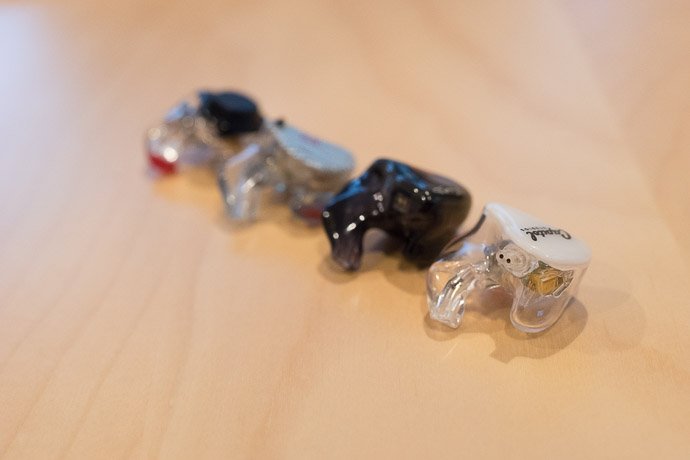
Assuming your source is good, the UERR will sound pretty flat, wide, and speedy. It’s not as wide sounding as Vision Ears’s VE6, and its midrange stereo is less layered than Noble Audio’s K10. It is quite a bit more diffuse than FitEar’s MH335DW.
I have feeling that some people will consider it bass anaemic. Bass doesn’t rise to meet or exceed midrange sound pressure, and descends at the lower registers similarly to two of my favourite reference earphones: Audio Technica CK10 and Nuforce HEM4. Impact is quick, and it piddles out just as quick. Sound pressure stays pretty even with the highest pressure midrange instruments. Reverb errs dry. You might even call it resin-y next to the Vision Ears VE6’s more harder echoes. As bass gets lower, its reverb dries out even more. Fast, bass-heavy trance, progressive, EDM, and unaccented French hip hop fit this signature to a T. In fact, going from the UERR to the MH335DW and K10C is now jarring. Only the VE6 comes close to the bass clarity of the UERR, but even then, throbs a smidgeon more.
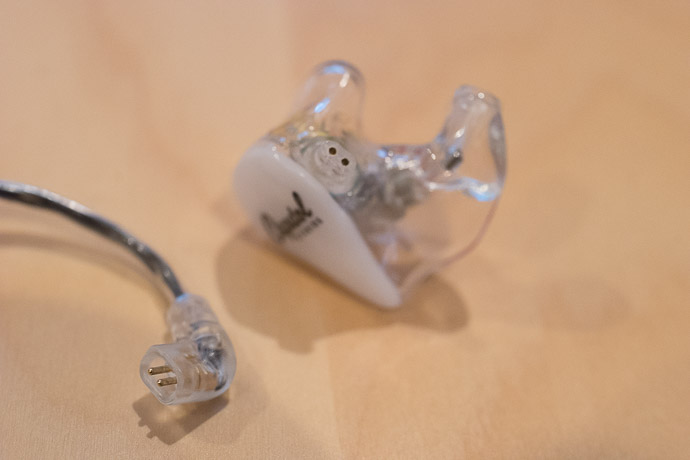
The result is a complete absence of frequency focus area between bands. Vocals jump forward slightly against bass, but I’m unconvinced that mids are amplified above bass. Perhaps it is a functional attack against natural loudness curves. Yet, its uncluttered, speedy, and open bass voicing is addictive, and less fatiguing for long listens.
The same trend continues where mids and highs meet. High frequency speed vis-à-vis absolute extension is right on, neither smearing, nor heating up too much. High sound pressure trails off gently, but overall remains high till the end. People unaccustomed or unfriendly to flat-field highs probably won’t find the UERR too much, but your mileage will vary. As they do against lows, mids attract focus more so than highs, but only so much as they draw you – however slightly – into vocals, drums, guitars, the works. High sound pressure against mids is slightly depressed. Against bass, it is nearly square.
The UERR isn’t capable of the same deep Z-axis stereo image that the K10C is known for. Neither does it compare favourably next to the VE6’s Z-axis deep lows and highs. And, while the UERR is light, quick, and reactive, stereo width and absolute stereo depth work aren’t equally impressive. UERR presents a wide, but flat sound field. It is matter of fact and plain, but thanks to an even and detailed midrange, powerful. It is closest to the VE6, but presents low and high instruments in closer proximity to each other.
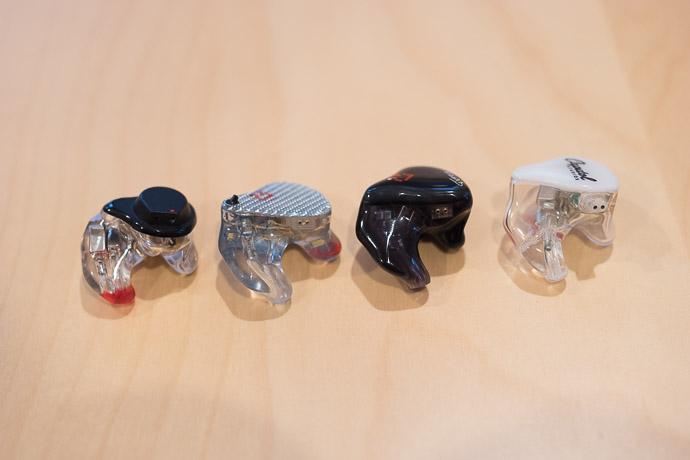
Jumping back to any of my other customs is hard. Not that any sound poor, but each – even the VE6 – in its own way sounds stuffy. Add to that the slight benefit that the UERR is less sensitive, and what you get is kind of a giant-killer for people that really enjoy a flat-field sound. While I’ve been getting on more and more with earphones whose highs roll off slightly, or whose bass blooms here and there, the UERR brought me back into the reference fold. It’s made me realise that my original preference in sound is still my reference. And it is a great showing of what three well-tuned drivers can do.
In no way is the UERR yesterday’s screechy, shrill reference earphone. And in no way is it a smooth operator. It straddles the line almost perfectly.
End words
If I were to rethink my custom lineup in terms of preference, I’d have a hard time not putting the UERR first. It’s its flat, unaccented voicing and wide image that really does it for the music I most often put through my DAPs. When I stray from classical, live acoustic, and trance, to hip-hop, trip hop, and other duff duff duff genres, the UERR is far less satisfying than the Noble K10 and even the VE6. When I cue up lusty vocalists, the FitEar MH335DW and the K10 get more play time. But for the daily grind, and for longer, more varied listening, the UERR is intensely satisfying.
And yet, it is made more fragily than the K10, and is certainly more fragile than its Vision Ears and the FitEar counterparts. Its cable is more a hassle than the Noble and Vision Ears, but less of one than the FitEar, whose connectors are hard to find, and often expensive. Finally, its printing quality is far below Noble Audio’s and Vision Ears’s, but more advanced than FitEar’s.
If flat and wide sound good to you, the UERR may tickle your fancy as much as it has mine.






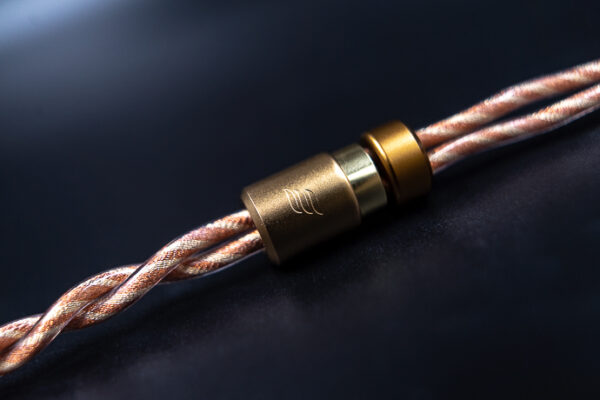
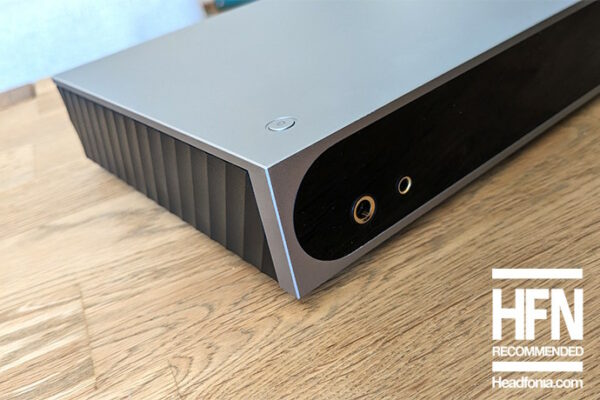
Barun C
Nice Review Nathan. Seems UERR hits the sweet spot somewhere, but do you think the sound stage and space between the notes are as wide as any of the recent Ocharaku offerings. It’s a good reference point for me to understand the characteristics of any IEM better these days.
Cheers
ohm image
Mr. Barun,
Hail your new, wonderful life!
In terms of detail between instruments, I feel that the UERR is ahead of Ocharaku. But in terms of fibrous detail that can only really be described by dynamic drivers, obviously, the Ocharaku is ahead. It is also brighter than the UERR and more energetic up top.
Both great, but I don’t think that if you are into dynamic drivers, the UERR would much interest you. Conversely, if absolute flatness, and balanced armature passivity are your thing, that Ocharaku would be interesting.
Then there is the custom thing. This is a beautiful earphone but next to a good dynamic? I’m not convinced there – but that is a personal point.
Barun C
Thanks, been a while since I visited HFN again. Please install WhatsApp on your phone again.
Cheers
Captain Blaze
Nice review… In regards to oils and wax in the tiny holes and the difficulty removing them…. I use a hearing aid vacuum cleaner to get into the tight areas. the device is basically an air pump with a hose/filter system and a hollow needle at the tip to reach into small areas and suction out the gunk.
Seems very effective with my UERRs
ohm image
Great advice. Many thanks.
Yola
Can you compare UERR with inear prophile 8 and fitear TG334?
ohm image
I’m afraid that I don’t have the ProPhile 8. The TG334 and the UERR are different enough, the TG334 more muscular in the mids and bass, and the UERR everything you read above.
ezekiel_77
Hi Nathan, great stuff. Just wondering do you still have the Lear BD4.2 with you?
ohm image
I do, yes. Why do you ask?
Ezekiel_77
Just that I don’t often see it in comparisons is all.
Yaroslav
Hi, great review!
This may seem like a really weird comparison, but still. Would you call this the in-ear version of something like LCD-X, or is there a better “match” to you? In as, somewhat flat, but still fun, highs harsh for some but not really, amazing bass but not loud.
Thanks in advance
canali
now on massdrop, too…..$799 if 5 people go for it.
i’ve never had universals, mostly listen to rock, blues, folk, some classical and jazz.
https://www.massdrop.com/buy/ultimate-ears-reference-remastered
Ivan Parshenkov
Rubin Report on the cover pic? Hmmmm